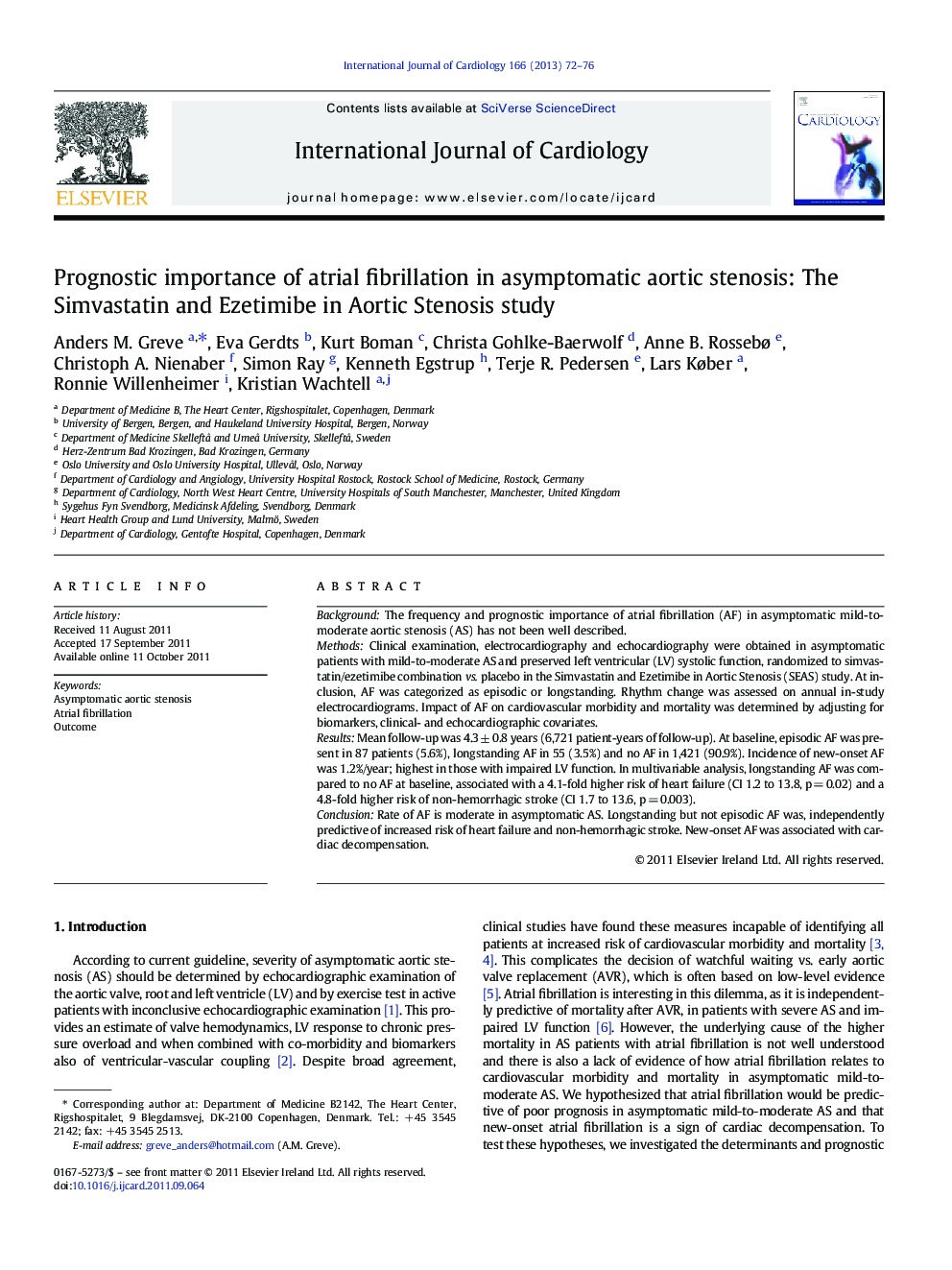| Article ID | Journal | Published Year | Pages | File Type |
|---|---|---|---|---|
| 5977370 | International Journal of Cardiology | 2013 | 5 Pages |
BackgroundThe frequency and prognostic importance of atrial fibrillation (AF) in asymptomatic mild-to-moderate aortic stenosis (AS) has not been well described.MethodsClinical examination, electrocardiography and echocardiography were obtained in asymptomatic patients with mild-to-moderate AS and preserved left ventricular (LV) systolic function, randomized to simvastatin/ezetimibe combination vs. placebo in the Simvastatin and Ezetimibe in Aortic Stenosis (SEAS) study. At inclusion, AF was categorized as episodic or longstanding. Rhythm change was assessed on annual in-study electrocardiograms. Impact of AF on cardiovascular morbidity and mortality was determined by adjusting for biomarkers, clinical- and echocardiographic covariates.ResultsMean follow-up was 4.3 ± 0.8 years (6,721 patient-years of follow-up). At baseline, episodic AF was present in 87 patients (5.6%), longstanding AF in 55 (3.5%) and no AF in 1,421 (90.9%). Incidence of new-onset AF was 1.2%/year; highest in those with impaired LV function. In multivariable analysis, longstanding AF was compared to no AF at baseline, associated with a 4.1-fold higher risk of heart failure (CI 1.2 to 13.8, p = 0.02) and a 4.8-fold higher risk of non-hemorrhagic stroke (CI 1.7 to 13.6, p = 0.003).ConclusionRate of AF is moderate in asymptomatic AS. Longstanding but not episodic AF was, independently predictive of increased risk of heart failure and non-hemorrhagic stroke. New-onset AF was associated with cardiac decompensation.
